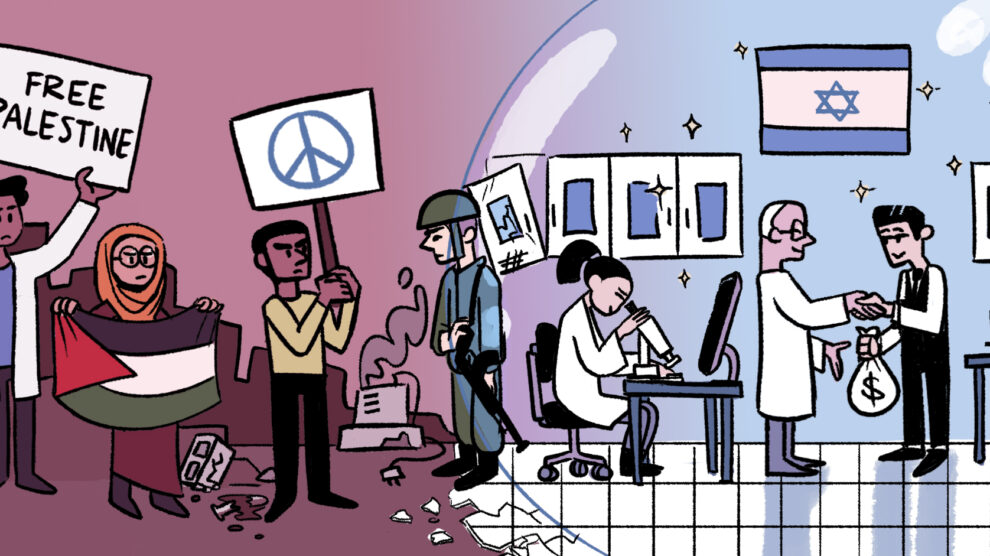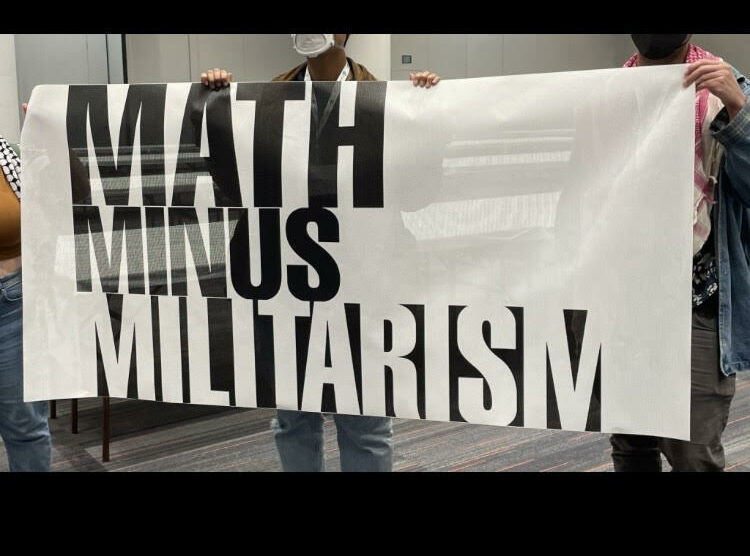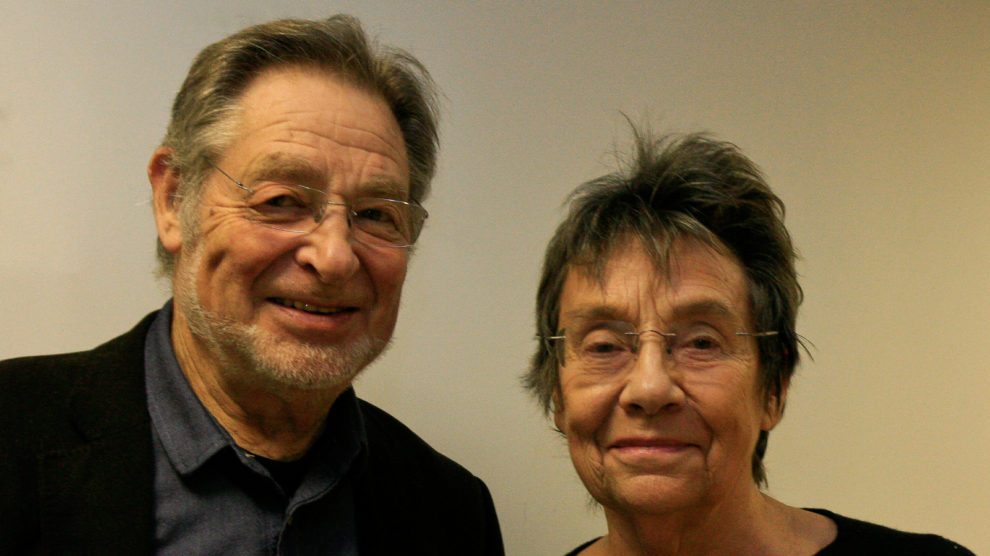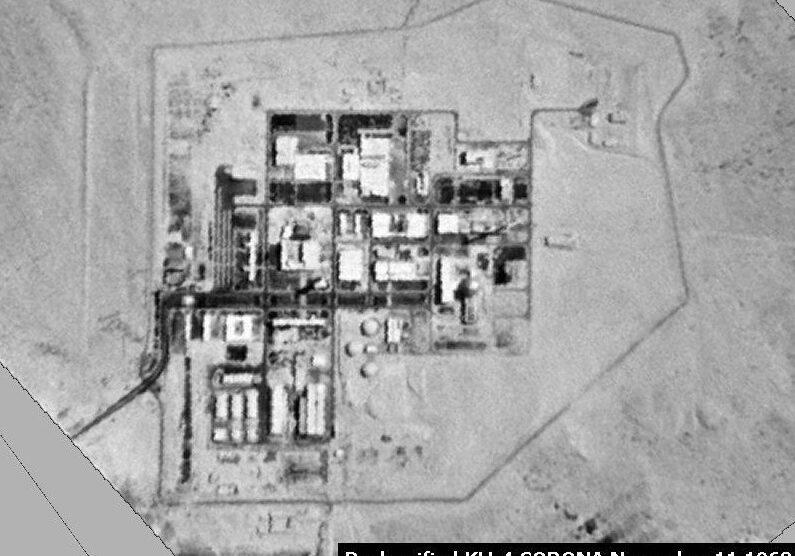Scholasticide: The Ongoing Colonial Attack on Palestinian Higher Education
By Mazin Qumsiyeh and Rasha Ali
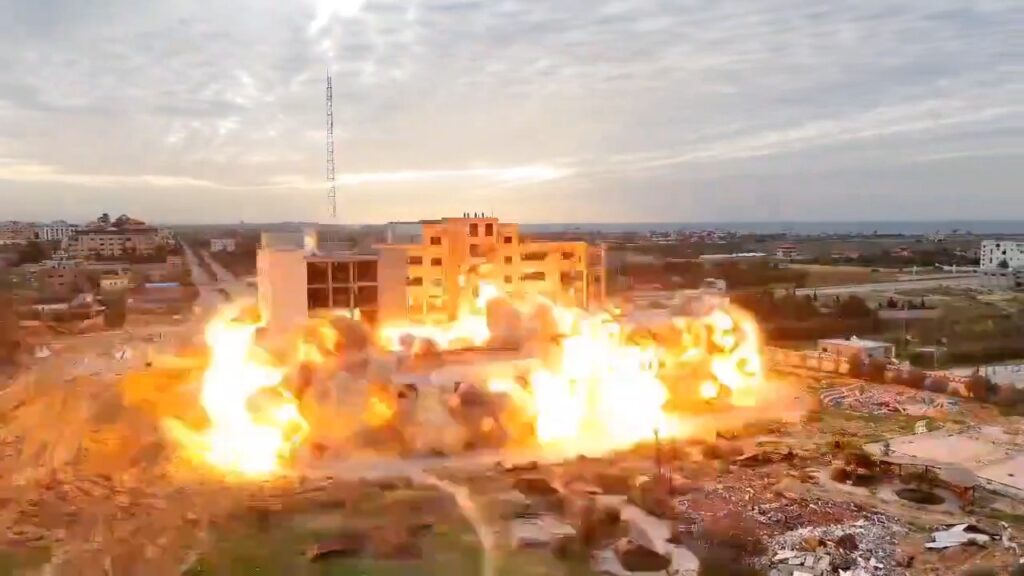
Settler-colonialism seeks to weaken Indigenous communities, in part by preventing intellectual development.1 Attacks on Palestinian educational institutions are as old as the formation of Israel. In 1948, Palestinian colleges and most Islamic and Christian educational institutions inside what later became Israel, were destroyed.2 Between 1948 and 1967, development of higher education was suspended throughout historic Palestine, and when it started to evolve again in the 1970s, it came under attack by Israeli occupation authorities.3 Many attacks took place during the First Intifada, between 1987 and 1991.4 Attacks on education (including higher education) is dubbed “educide,” “epistemicide,” or “scholasticide” and is understood in the context of the colonial “logic of elimination” of Indigenous people.5
The Recent Scholasticide Episode Starting in Gaza
The Gaza Strip is located on Palestine’s southern Mediterranean coast, and shares borders with Egypt on Palestine’s southwestern corner. Over two-thirds of its 2.3 million people are refugees ethnically cleansed from areas that became “Israel” in 1948.6 The Strip was intentionally de-developed, economically evolving into a “concentration camp,” an “open-air prison,” or “laboratory.”7
In Israeli attacks on the Gaza Strip in the past 20 years—in 2008-09, 2014, 2020, and 2021 (indeed, since the start of the occupation in 1967)—Gaza’s educational system suffered greatly, largely due to the difficulty of reconstruction resulting from either Israel’s blockade of the Strip, or direct efforts to stop reconstruction.8 The attacks that started October 7, 2023 have been worse than earlier attacks and have not yet ended.9 There are pending cases of genocide and grave breaches of international law at the International Court of Justice and International Criminal Court, which also involve deliberate attacks on higher education.10 Examples include videos and images showing Israeli troops rigging explosives inside universities and cheering as they blew up.11
Since October 7, 2023, Israel has bombed all eleven of Gaza’s universities: the Arab College of Applied Sciences, the Islamic University of Gaza, the Palestine Technical College, the Al-Aqsa University, Al-Azhar University, the Al-Quds Open University, the University College of Applied Sciences, the University of Palestine, Israa University, the University of Gaza, Palestine College of Nursing, and the Arab College of Applied Sciences. The Israeli onslaught has destroyed campuses, prevented students from accessing education, killed >650 university students and 111 faculty and staff from higher education institutions.12
The dead include Professor Sufian Tayeh, President of the Islamic University of Gaza, UNESCO chair in astronomy, astrophysics, and space sciences in Palestine; Dr. Ahmed Hamdi Abo Absa, Dean of the University of Palestine’s software engineering department (following three days of custody), shot and killed by Israeli forces as he was leaving his campus building; Muhammad Eid Shabir, former president of the Islamic University of Gaza, a virologist and immunologist, assassinated by Israeli military forces; and Refaat Alareer, renowned poet and Professor of Creative Writing and Comparative Literature at the Islamic University of Gaza, killed alongside members of his family.13
Israel’s attacks since October 7 have not been limited to the Gaza Strip. The West Bank has been subjected to a lockdown, severely restricting movement between cities. West Bank universities have had to rely on online teaching.14 Israeli leaders are threatening to repeat what they have done in the Gaza Strip in other areas like the West Bank and Lebanon. As of this writing, it is not clear in what direction the Israeli scholasticide is heading.
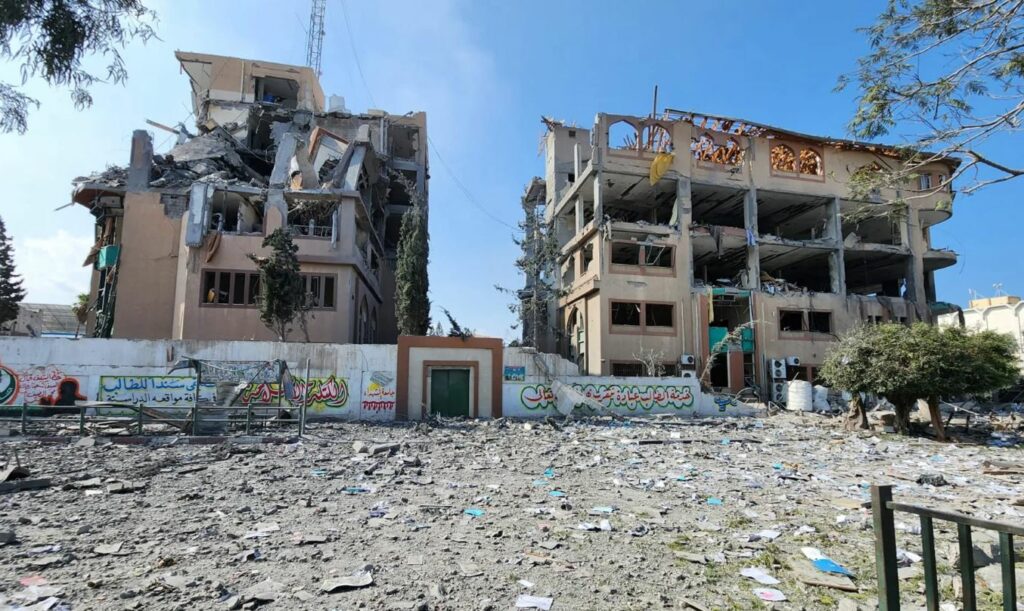
How Higher Education Institutions Adapt and How They May Be Resuscitated
Pursuing education and building society are considered acts of resistance under Israeli occupation.15 In the course of previous uprisings, accompanied by Israeli attacks on higher education, institutions developed methods of education as ‘resistance tools.’ For example, when universities were forcibly closed during the 1987–91 Intifada, many universities held clandestine courses in teachers’ homes, mosques, and other community locations. Beginning with the 2000-2005 uprising, Palestinian higher education adapted to stressful situations by taking courses online.16 Higher education has been viewed through a nationalist lens, crucial for the achievement of national goals such as the Right of Return, liberation, and self-determination.17 Following Israel’s latest attack, faculty at Birzeit and Bethlehem Universities have issued a specific program of action.18
While there are limits to what can be done for academia in Gaza in light of repeated attacks, some things can be done and have been done in the past to recuperate.19 Here are some actions that we propose are possible for universities outside and within Palestine:
- Universities play a significant role in fostering capacity building, resilience and persistence (sumud) in preparation for what would be their normal role of helping economic development.20
- Scholars around the world have become involved and this must continue and expand.
- Some groups offer safe haven for scholars at risk.21
- Israeli universities are complicit and should be boycotted.22
- There are many universities around the world that succumb to Zionist intimidation and try to limit free speech and assembly or even expressions of support for Palestinian human rights.23 This must be challenged.
- Struggle to end the conflict based on justice and human rights including the right to education: Rebuilding cannot happen logically under continued occupation/colonization and repeated attacks on the Gaza strip.24
- Build hope via restructuring of educational systems (at all levels including higher education) in ways that instill pride in our heritage and in our struggle and hope for a future of freedom and self-determination. This includes working to encourage collective work, volunteerism, innovation, and creative thinking,
- Educational institutions at all levels should offer holistic and community–based solutions.25
- A Palestinian multi-university should be established to help formulate a new national agenda and connect and ensure complementarity of Palestinian higher education so that when one part is under attack, other parts of the networked system can carry on.26
- While distance education is useful in some circumstances, it has to be structured well to produce the most effective result.27 Further, there has to be a systematic approach to building capacity for digital education.28
The systematic crimes of Israel’s occupation have a broader goal of ethnic cleansing and erasure of Palestinian national identity.29 Yet, despite the difficulties, there are many avenues for challenging this aspect of colonization. Palestinians value education. After every episode of colonial onslaught (after fourteen uprisings/intifadas), they have always managed to reconstruct and rebuild.30 The same will happen in the wake of Israel’s current assault on Gaza. Like South Africa’s response to the Soweto uprising, Israel’s current war on Gaza and the West Bank may be its last.
Acknowledgment: We are grateful to David Kattenburg for comments and edits on the manuscript.
Palestine Institute for Biodiversity and Sustainability, Bethlehem University, Bethlehem, Palestine
Notes
-
-
- Tejendra Pherali and Ellen Turner, “Meanings of Education Under Occupation: The Shifting Motivations for Education in Palestinian Refugee Camps in the West Bank,” British Journal of Sociology of Education 39, no. 4 (Sept 2017): 567-589, https://doi.org/10.1080/01425692.2017.1375400.
- Adel Manna, The History of Palestine in the Late Ottoman Period, 1700-1918 (A New Reading). (Beirut: Institute for Palestine Studies, 1986).
- Penny Johnson, “Palestinian Universities Under Occupation,” Journal of Palestine Studies 15, no. 4 (Autumn 1986): 127-133, https://doi.org/10.2307/2537026; Christa Bruhn,“Higher Education as Empowerment: The Case of Palestinian Universities,” American Behavioral Scientist 49, no. 8 (April 2006): 1125-1142, https://doi.org/10.1177/0002764205284722; Keith Hammond, “Palestinian Universities and the Israeli Occupation,” Policy Futures in Education 5, no. 2 (June 2007): 264-270, https://doi.org/10.2304/pfie.2007.5.2.264; Anwar Hussein, Shelley Wong, and Anita Bright, “History and Impact of Israeli Siege and Attacks on Education in Gaza, Palestine,” in Oxford Research Encyclopedia of Education (Oxford: Oxford University Press, 2024).
- Yamila Hussein, “The Stone and the Pen: Palestinian Education During the 1987 Intifada,” The Radical Teacher 74 (2005): 17-22; Mazin B. Qumsiyeh, Popular Resistance in Palestine: A History of Hope and Empowerment. (London: Pluto Press, 2012).
- Nadia Naser-Najjab, “Palestinian Education and the ‘Logic of Elimination,’”Settler Colonial Studies, 10, no 3 (2020): 311-330; Nour Naim, “Israel’s War on the Education Sector in the Gaza Strip,” Arab Center Washington DC, March 20, 2024, https://arabcenterdc.org/resource/israels-war-on-the-education-sector-in-the-gaza-strip; Lindsey Suha Hennawi, “Education as Resistance: Detention of Palestinian University Students Under Israeli Occupation and Palestinian Political-Cultural Responses,” BA thesis, (Boston College, 2011).
6.Ilan Pappé, The Ethnic Cleansing of Palestine. (Oxford: Oneworld, 2006).
- Khalid Manzoor Butt and Anam Amid Butt, “Blockade on Gaza Strip: A Living Hell on Earth,” Journal of Political Studies 23, no. 1 (2016): 157-182; Sara Roy, “De-development Revisited: Palestinian Economy and Society since Oslo,” Journal of Palestine Studies, 28, no. 3 (1999): 64-82; Yves Winter, “The Siege of Gaza: Spatial Violence, Humanitarian Strategies, and the Biopolitics of Punishment,” Constellations 23, no. 2 (2016): 308-319; Alison Caddick, “Gaza and the Unspeakable,” Arena 16, no. 1-4 (December 2023); Roald Høvring, Hovring, “Gaza: The World’s Largest Open-air Prison,” Norwegian Refugee Council, April 26, 2018, https://www.nrc.no/news/2018/april/gaza-the-worlds-largest-open-air-prison/; Gary Fields, “Lockdown: Gaza through a Camera Lens and Historical Mirror,” Journal of Palestine Studies49, no. 3 (2020): 41-69; Muhammed Yasir Okumuş, Reviewed Work: Gaza: A History by Filiu Insight Turkey 20, no. 3 (Summer 2018): 302-304; Ilan Pappé, The Biggest Prison On Earth (Oxford: Oneworld, 2016); Darryl Li, “The Gaza Strip as Laboratory: Notes in the Wake of Disengagement,” Journal of Palestine Studies 35, no. 2 (2005): 38-55.
- Wadee Alarabeed, “The Myth of Gaza’s Reconstruction: The Rise and Fall of Reconstruction Space Under the Israeli Siege,” Journal of Peacebuilding & Development 19, no. 1 (January 2024): 110-116.
- Akihiro Seita, and Ghada Al-Jadba, “Gaza is Facing a Humanitarian Catastrophe,” The Lancet 402, no. 10414 (November 2023): 1745; Martin Shaw, “Inescapably Genocidal,” Journal of Genocide Research (January 2024): 1-5.
- Mohammed Nijim, “Genocide in Palestine: Gaza as a Case Study,” The International Journal of Human Rights27, no. 1 (November 2020): 165-200; Shaw, “Inescapably Genocidal.”
- Brendan O’Malley and Wagdy Sawahel, “Can Higher Education in Gaza Survive Israel’s War on Hamas?” University World News January 28, 2024, https://www.universityworldnews.com/post.php?story=20240128063555120#.
- Rabia Ali, “‘Scholasticide:’ How Israel is Systematically Destroying Palestinian Education in Gaza”. Anadolu Agency,February 12, 2024, https://www.aa.com.tr/en/education/-scholasticide-how-israel-is-systematically-destroying-palestinian-education-in-gaza/3135127#; Euro-Mediterranean Human Rights Monitor, “Israel Kills Dozens of Academics, Destroys Every University in the Gaza Strip,” EMHRM, January 20, 2024, https://euromedmonitor.org/en/article/6108/Israel-kills-dozens-of-academics,-destroys-every-university-in-the-Gaza-Strip; Neve Gordon and Lewis Turner, “Academics Have a Duty to Help Stop the ‘Educide’ in Gaza,”. University World News, February 27, 2024, https://www.universityworldnews.com/post.php?story=20240227095745252#:~:text=In%20addition%20to%20hundreds%20of.
- Scholars Against the War (SWAP), “Toolkit International Action Against Scholasticide,” Scholars Against the War on Palestine, February 14-29, 2024, https://scholarsagainstwar.org/toolkit/; O’Malley and Sawahel, “Can Higher Education Survive?”
- Tahani Aldahdouh et al., “Development of Online Teaching Expertise in Fragile and Conflict-affected Contexts,” Frontiers in Education 8, (2023): 1242285.
- Hennawi, “Education as Resistance”; Qumsiyeh Popular Resistance.
- Smith, M. and Scott, H., 2023. Distance education under oppression: The case of Palestinian higher education. Education Sciences, 13(7), p.729.
- Bruhn, Higher Education.
- Mazin Qumsiyeh, “Assault on Education,” Popular Resistance [blog], December 1, 2023, https://popular-resistance.blogspot.com/2023/12/assault-on-education.html..
- Mona Jebril, “Between Construction and Destruction: the Experience of Educationalists at Gaza’s Universities,” Compare: A Journal of Comparative and International Education 53, no. 6 (2023): 986-1004; Sansom Milton, Ghassan Elkahlout and Sultan Barakat, “Protecting Higher Education from Attack in the Gaza Strip,” Compare: A Journal of Comparative and International Education, 53, no. 6 (2023): 1024-1042.
- Sam Abd and Sam Alfoqahaa, “Economics of Higher Education Under Occupation: The Case of Palestine,” Journal of Arts and Humanities 4, no. 10 (2015): 25-43.
- See Scholars Against War, https://scholarsagainstwar.org/; Scholars for Palestine, https://www.scholarsforpalestine.org/; British Committee for the Universities of Palestine (BRICUP), https://bricup.org.uk/; Gazan Student Support Network, https://www.gazanstudentsupport.org/; https://pssar.ca/; Writers Against the War on Gaza, https://www.writersagainstthewarongaza.com; Academics4Peace, https://www.academicsforpeace.org/; Middle East Studies Association, https://mesana.org/advocacy/committee-on-academic-freedom; Palestinian Students & Scholars at Risk (PSSAR) Intiative, https://pssar.ca/; Architects for Gaza Education, bit.ly/AFG_CALL; Gaza Virtual University, http://gazavu.org; Scholars against the War on Palestine. See also this statement from Palestinian Higher Education Institutions and others (https://popular-resistance.blogspot.com/2023/12/assault-on-education.html). Links to online resources available at SftP magazine online.
- Examples include NIAS Safe Haven Fellowship, https://nias.knaw.nl/fellowships/safe-haven-fellowship/; Scholars at Risk Network, https://www.scholarsatrisk.org/; Scholars at Risk Program at Harvard University, https://harvardscholarsatrisk.harvard.edu/; Compostela Group of Universities Scholars at Risk, https://web.gcompostela.org/scholars-at-risk-sar/; OxPal, https://oxpal.org/about/. Links to online resources available at SftP magazine online.
- David Landy, Ronit Lentin, and Conor McCarthy, Enforcing Silence: Academic Freedom, Palestine and the Criticism of Israel, (London: Zed Books, 2020); David Lloyd and Malini Johar Schueller, “The Israeli State of Exception and the Case for Academic Boycott,” Journal of Academic Freedom 4, (2013): 1-10; Ashley Dawson and Bill V. Mullen (Eds), Against Apartheid: The Case for Boycotting Israeli Universities, (Chicago: Haymarket, 2020).
- Mary Jo Nadeau and Alan Sears, “The Palestine Test: Countering the Silencing Campaign,” Studies in Political Economy, 85(1): 7-33; William Robinson and Marysam S. Griffin, We Will Not Be Silenced: The Academic Repression of Israel’s Critics (Edinburgh: AK Press, 2017); Jumana Bayeh and Nick Riemer, “Palestine Solidarity and Zionist Backlash in Australian Universities,” Middle East Critique 33, no. 3 (April 2024): 435-448.
- Alarabeed, “Myth of Gaza’s Reconstruction; Sansom Milton, Ghassan Elkahlout, and Saba Attallah, “Shrinking Reconstruction Space in the Gaza Strip: Rebuilding after the 2021 and 2022 Wars”, Conflict, Security & Development 24, no. 1 (March 2024): 49-78.
- Kamal Badrasawi, I.O. Ahmed, and Iyad Eid, “Exploring Ways to Provide Education in Conflict Zones: Implementation and Challenges,” Intellectual Discourse 26, no. 2 (January 2018): 567-594; Milton et al., “Protecting Higher Education,” Milton et al., “Protecting Time and Space.”
- Khalid Shabib, “From Higher Education in Historic Palestine Towards a Pan-Palestinian Higher Education,” Contemporary Arab Affairs 14, no. 3 (2021): 21-54.
- Denise Whitelock et al., “Capacity Building for Digital Education,” Open Learning: The Journal of Open, Distance and e-Learning, 39, no. 2 (2024): 105-111.
- Drita Sulejmani, “Ethnic Cleansing and Colonization in the Case of Historical Palestine: Comparative Analysis from 1948 to Today,” JUSTICIA–International Journal of Legal Sciences 7, no. 11 (2019): 52-60.
30. Qumsiyeh, Popular Resistance
-


